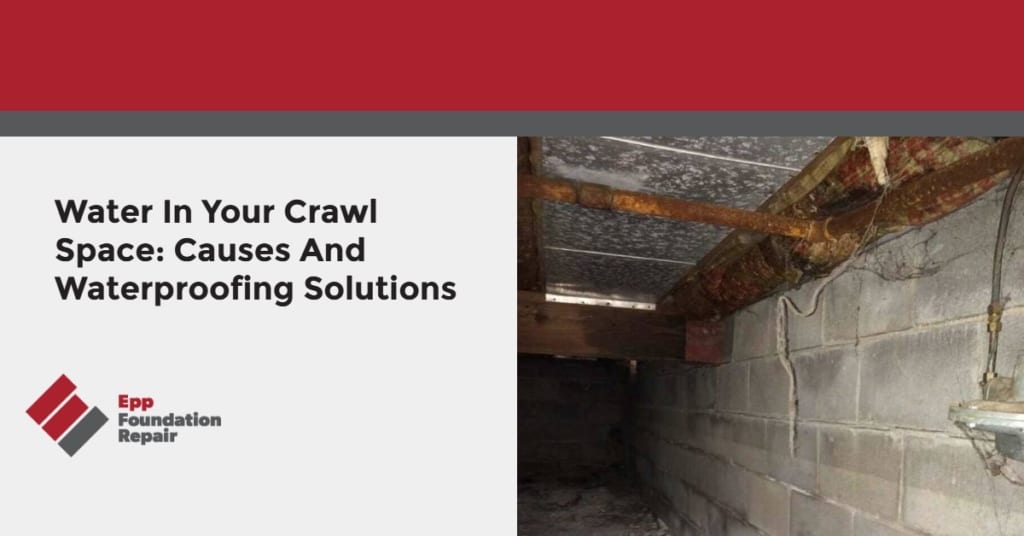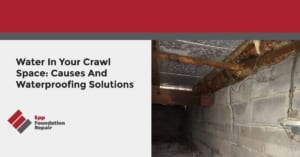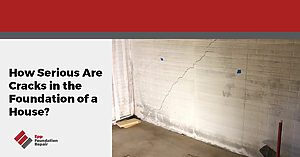Why you don’t want water in a crawl space
You don’t want water in a crawl space because of the negative impact it can have on your home’s structural integrity and because some of the air in your crawl space makes its way up and into your home’s living area.
A wet crawl space can negatively affect a building’s structural integrity. Moisture in a crawl space that doesn’t have a way to evaporate will eventually cause wood rot. Wood rot will, over time, weaken structural elements and lead to settlement, sagging, and ultimately failure.
Another reason you don’t want water in your home’s crawl space is air quality. A certain percentage of the air in your crawl space makes its way up and into your home’s living area. Since moisture in a crawl space will also cause mold to grow on the structural elements, that means you’ll be breathing in allergens. Yuck.
Also, damp air costs more to heat and cool than dry air, and when you’re crawl space is wet, the air inside your home will be more humid. That translates into higher energy costs.
Learn more about: Negatives to crawl space encapsulation
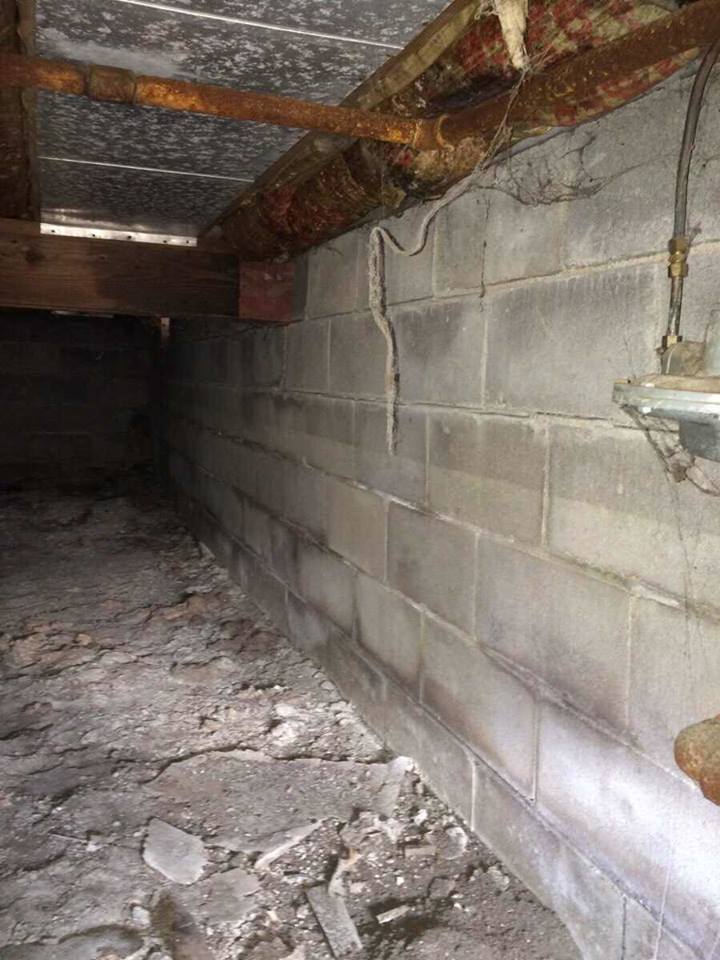
Major Problems Caused by a Wet Crawl Space
A wet crawl space can lead to a plethora of issues if left unattended, including the following:
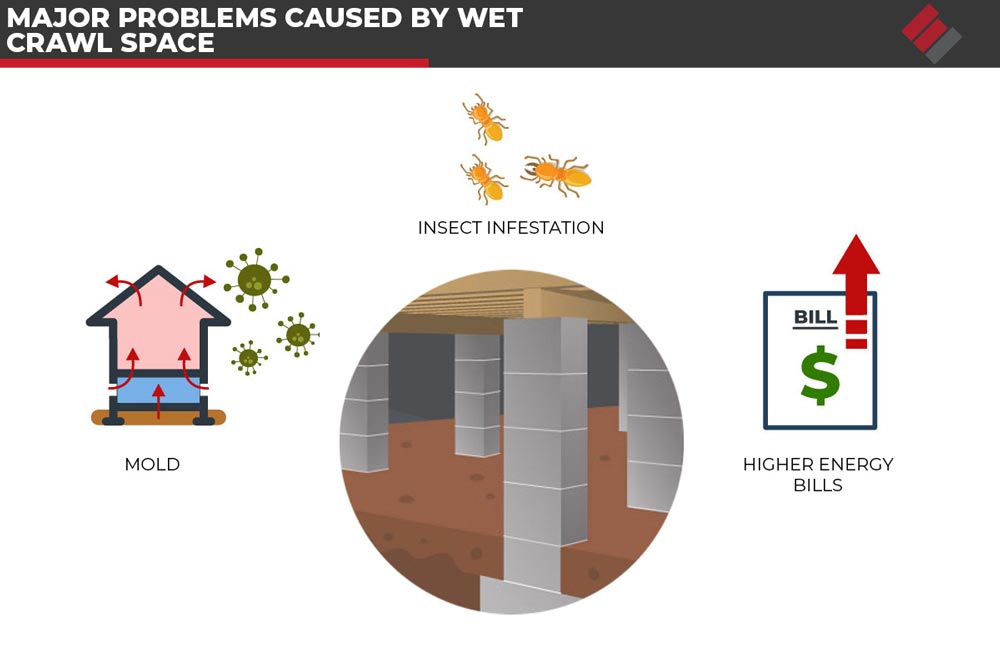
Mold
One of the major potential problems is the growth of mold, which can be hazardous to one’s health and lead to structural damage. Mold can spread quickly and easily in a damp and humid environment, releasing harmful spores into our air. These spores can lead to respiratory issues, allergies, and other serious health problems–especially in young children and older adults. Since some of the air in the crawl space flows into your home’s living space, this is a serious concern.
Insect infestation and structural damage
A wet crawl space is also a breeding ground for insects and pests, such as termites, carpenter ants, and rodents. These pests can cause extensive damage to the wooden beams and joists that support the structure of your home, leading to costly repairs. These critters can also easily make their way into your living space, causing even more damage and problems.
Higher energy bills
In addition to the health and structural dangers, a wet crawl space can contribute to higher energy bills. Humid air is much harder to heat and cool than dry air, so your HVAC system has to work harder to maintain a comfortable temperature in your home. This increased workload on your system can result in higher energy bills and lead to premature wear and tear, reducing the lifespan of your HVAC system.
How does water get into a crawl space?
Simply put, water gets into a crawl space because the soil around and under your foundation is too wet. The ground might be oversaturated with water because,
- Your gutters are clogged, and water is spilling over the side of the house and into the soil next to the foundation.
- Your downspouts are too short. Like clogged gutters, downspouts that are too short will dump water next to the foundation, where it will then sink into the soil.
- Your yard is improperly graded. An improperly graded yard makes it hard for water to flow away from your foundation.
- You live in an area with a high water table. When it rains heavily, the water table rises and this could create standing water in a crawl space.
If you notice water in a crawl space after a heavy rain, one or more of the above is likely to be the culprit. However, moisture can also build up in a crawl space from a lack of ventilation. If you notice water or moisture in your crawl space and it’s not the rainy season, you might have a problem with…
- Leaky plumbing – These could be either sewer pipes or water pipes, or both. If there’s water in the crawl space directly beneath a plumbing fixture like a bathtub, toilet, or sink, you probably have a plumbing leak.
- Humidity from lack of ventilation – Moisture in the soil will raise the humidity level in the crawl space. If there isn’t enough ventilation, the crawl space will stay humid, and eventually, mold will start to form on the structural elements.
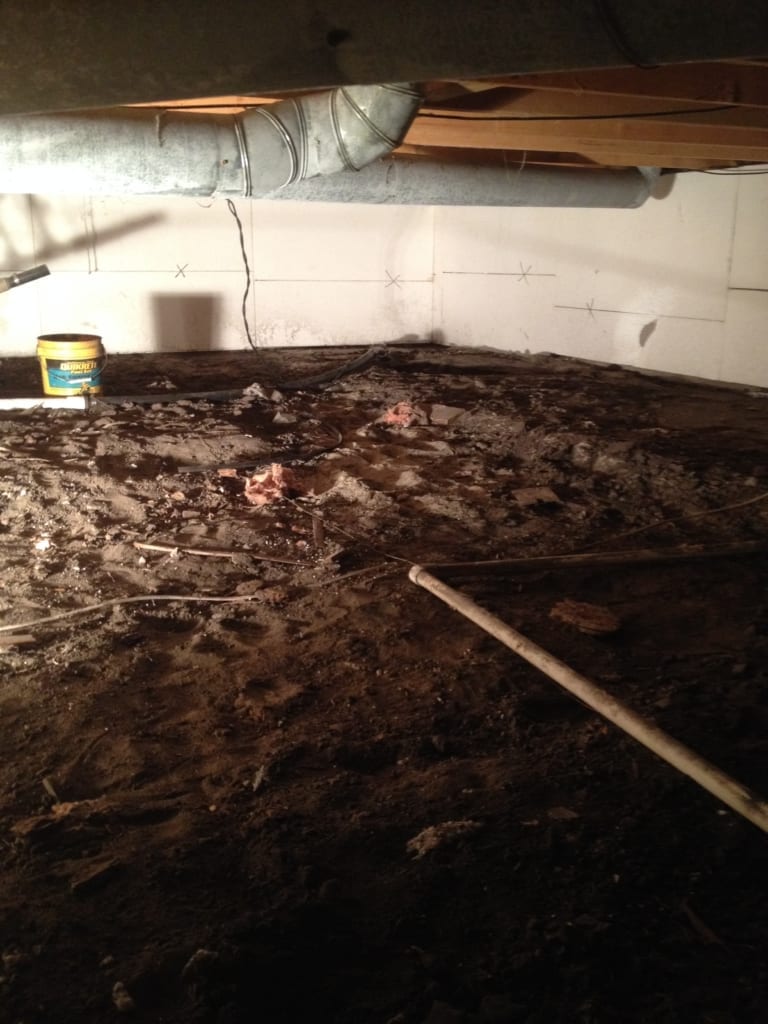
How hydrostatic pressure helps water get into a crawl space
When the soil around your foundation is saturated with water, and there’s no way for it to drain off, hydrostatic pressure builds up and starts pressing against your foundation walls. Hydrostatic pressure makes it easy for water to find its way in via tiny cracks. Hydrostatic pressure can even cause cracks in a foundation wall.
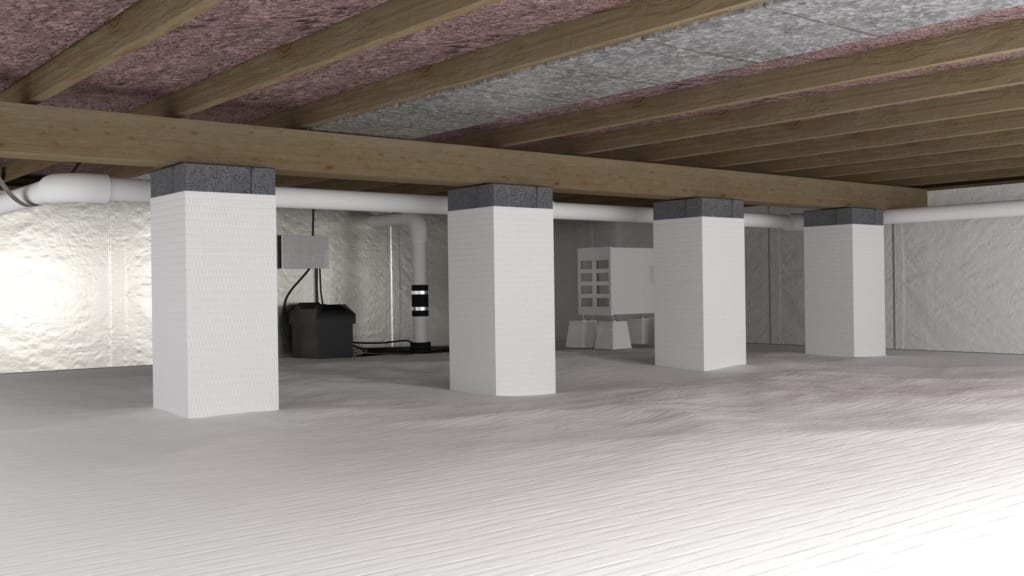
Signs of water in a crawl space
Signs you might have a problem with excess moisture in your crawl space include,
- Rotting wood structural elements
- Warped floors above the crawl space
- Visible mold growth on wood surfaces in the crawl space
- Termite damage
How to keep a crawl space dry
There are various ways to keep a crawl space dry including,
Use dehumidifiers to remove moisture from the air – Dehumidifiers help keep the air in your home’s crawl space dry. Since a certain amount of air from your crawl space makes its way up and into your living space, you want this air to be as dry as possible because humid air is more expensive to heat and cool.
Use vents and ventilation fans – Crawl space vents and ventilation fans help keep air moving through your crawl space. However, there’s some debate on whether or not crawl space vents and ventilation fans actually help keep crawl spaces dry.
Regrade your yard (if necessary) so that water flows away from your home’s foundation – Your yard should slope away from your home’s foundation. If your yard slopes toward your foundation, water will pool around the foundation and eventually make its way into the crawl space. Both foundation repair contractors and landscapers can regrade your yard. However, if you’re up for it, this might be a good DIY project.
Keep gutters free from debris – Clogged gutters can cause water to spill over the side of your house. This deposits a lot of water into the soil right next to your foundation. This moisture will eventually find its way into your crawl space.
Install downspout extensions if necessary to channel water away from the foundation – Sometimes downspouts are too short and dump water next to the foundation. Downspout extensions are an easy way to take this water and channel it away from the foundation.
Regularly check all plumbing for leaks – Make a habit of performing a periodic check to ensure you don’t have any leaky pipes.
Have a professional encapsulate your crawl space – Crawl space encapsulation completely isolates the crawl space from the soil by lining the walls, ceiling, and floor with polyurethane plastic. An encapsulated crawl space is clean and dry, and that means any air from the crawl space that makes its way up into your home won’t contain allergens or other health hazards. An encapsulated crawl space is also a good storage place.
Exterior and interior crawl space waterproofing – Waterproofing your home’s crawl space using either the exterior or the interior method (or both) will prevent the soil around your foundation from getting oversaturated with water. Both these highly effective waterproofing solutions take excess moisture and channel it away from the foundation so it can’t get into your crawl space.
How to make absolutely sure your crawl space stays dry
If you want to ensure your home’s crawl space stays dry, we recommend installing an interior drain tile system with a sump pump and then having the crawl space encapsulated along with a dehumidifier. All of these combined will leave you with a nice, dry crawl space. If you want to go a step further and get that extra peace of mind, you could have an exterior waterproofing system installed as well.
Who to call for water in a crawl space
If you have water in your crawl space, you’ll need to find a foundation repair contractor in your area experienced in crawl space drainage and waterproofing. Note that this is not the same as a contractor who specializes in drying out flooded basements. Those companies clean up the mess. They don’t prevent it from happening in the first place.
Crawl space encapsulation cost
In our service area in Nebraska, Iowa, Kansas, and Missouri, a typical crawl space encapsulation job costs around $5000. That’s around $7-9 per square foot. However, this might not be the crawl space encapsulation cost in your area. Therefore, you’ll need to contact a foundation repair contractor in your area that does crawl space encapsulation and ask for an inspection and cost estimate. Most contractors will do the inspection for free.
Water in a crawl space is nothing unusual because crawl spaces are below grade (i.e., underground). Therefore, they easily get wet. However, crawl space waterproofing will help maintain your home’s structural integrity by keeping the soil under and around the foundation dry. Crawl space waterproofing will also help keep your energy bills down by lowering the humidity of the air in the crawl space, air that makes its way up and into your home. Finally, waterproofing crawl spaces ensures that crawl space air isn’t filled with mold spores and other health hazards.
If you need crawl space waterproofing and you’re in our service area in Nebraska, Iowa, Kansas, and Missouri, contact us for a free inspection and estimate.

